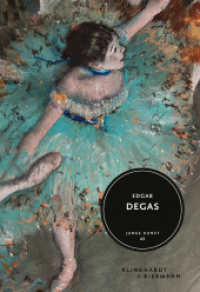- ホーム
- > 洋書
- > ドイツ書
- > Humanities, Arts & Music
- > History
- > regional history
Full Description
Why does an entire society believe that there are witches who must be burned? What roles did the emerging 'state', the professions of clerics and jurists, and the public involved play in each case? And how could this project be completed?From a sociological point of view, the findings of recent international research on witches provide a model of a more general, highly ambivalent, 'pastoral' attitude, according to which a shepherd has to care for the welfare of his flock as well as for its erring sheep.
The first main part describes the clerical initial situation, which developed the 'Dominican' demonological model of witchcraft on the basis of the still dominant magico-religious mentality in the 15th century.
A model, according to the second part of the book, which then in the course of the 16th century in Western Europe increasingly fell into the hands of the not so innocent jurists. From there it developed into a legal witch persecution that realized the early European witch model from the village witch to the mass persecutions to the late child witches.
The third part describes how witch persecutions slowly became less important towards the end of the 17th century as a general witchcraft 'politics' game in the transition from a confessional state to a (court) 'civil service' state.
Contents
Preface.- 1 The framework, an introduction.- Part I The clerical witch model: How the witch crime was invented.- 2 The magical space as mental framework: The clerical playing field.- 3 On the prehistory.- 4 From heretics to witches?.- 5 The witch: construction or reality?.- 6 The witch propaganda.- Part II The legal witch persecution: How the witch-crime was realized.- 7 The 'normal' witchcraft.- 8 The manorial criminal justice system: the legal playing field.- 9 The mass persecutions.- 10 Possession and child-witches.- Part III The witch-politics game: How witchcraft crime was decriminalized.- 11 On the preconditions for analysis.- 12 The end of witchcraft persecution: Tolerance.- 13 Witch Belief: Skepticism and Criticism.- 14 A Conclusion: Witches as Instruments of a Symbolic 'Politics' Game.- Appendix: Recommended Reading.- Literature.








